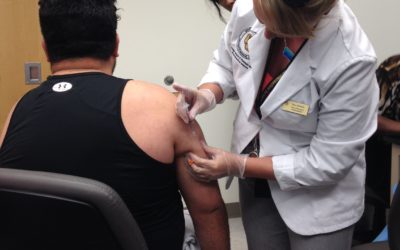What is Rebound Congestion?
Nasal congestion, also called a “stuffy nose” is characterized by the feeling of a “stuffy”, plugged feeling in your nasal passages. It may or may not include a runny nose as well. Nasal congestion can stem most commonly from different things like allergies or infections (like the cold, flu, or sinusitis), which lead to the swelling of your tissues and blood vessels in the nose. If you’re feeling symptoms of nasal congestion, it is common to head to the pharmacy and try to find a product to offer you some relief. There are both oral medications and nasal sprays available over the counter to help treat congestion. Some nasal spray products work very well for reducing congestion symptoms, but it is important to understand how best to use them.
Oxymetazoline nasal spray is sold under various brand names including Afrin, Mucinex nasal spray, Vicks Sinex, 12 Hour Decongestant, Dristan and others. If the active ingredient in your nasal spray includes oxymetazoline, this information applies to you. The labeled indications for oxymetazoline nasal spray include temporary relief of nasal congestion (due to a cold, hay fever, or other upper respiratory allergies) and the temporary relief of sinus congestion or pressure.
See our blog about prescription nasal spray here.
Phenylephrine nasal spray is sold under various brand names including Neo-Synephrine and 4-Way Fast Acting. If the active ingredient in your nasal spray includes phenylephrine, this information also applies to you. The labeled indications for phenylephrine nasal spray includes the same as those for oxymetazoline, for the temporary relief of nasal congestion (due to a cold, hay fever, or other upper respiratory allergies) and the temporary relief of sinus congestion or pressure.
The key here to understand for proper use of these medications is the word temporary. When used appropriately as directed, oxymetazoline nasal spray and phenylephrine nasal spray work very well for many people to relieve their nasal congestion. For oxymetazoline, the recommended use is to instill two to three sprays in each nostril twice daily. For phenylephrine, the recommended use is to instill two to three sprays in each nostril no more than every 4 hours. However, the use of either nasal spray should be limited to a maximum of three to five days due to the risk of rebound congestion unless otherwise directed by a physician.
Prescription strength now over the counter.
Rebound congestion, also called rhinitis medicamentosa, can occur with consecutive use of oxymetazoline or phenylephrine nasal spray for more than three to five days. After constant use of the nasal decongestant, your congestion may begin to worsen and become very hard to get rid of. This is because the nasal decongestant spray works by shrinking your blood vessels inside your nose to relieve the symptoms of nasal swelling. Once the medication wears off, your blood vessels will expand again, and you might start to feel stuffy again. With constant use of the decongestant, your nasal blood vessels can start to rebound back by expanding even more in between sprays. This is where the rebound congestion comes in, leading you to feel more congested after all.
This cycle may then make you feel like you cannot stop the nasal spray, otherwise you feel congested. To avoid this phenomenon, limit your use of nasal decongestants containing oxymetazoline and phenylephrine to three to five days at a time. Once you’ve crossed the path into rebound congestion, it can be tough to treat and may take a prolonged period to go away. If you are experiencing rebound congestion, speak with your healthcare provider about how best to manage your condition. Rebound congestion does not occur with other over-the-counter nasal sprays like Flonase, Nasonex, and Nasacort, only with those described here.
Summary
• Nasal congestion is characterized by the feeling of a ‘stuffy nose’ or feeling plugged in your nasal passages.
• Rebound congestion can occur with consecutive use of oxymetazoline or phenylephrine nasal spray for more than three to five days.
• Limit your use of nasal decongestants containing oxymetazoline to three to five days at a time to prevent rebound congestion.
Disclaimer: This blog is written for informational and educational purposes only. It is not intended to be a substitute for professional medical advice, diagnosis, or treatment. Always seek the advice of your physician or other qualified health provider with any questions you may have regarding a medical condition. Never disregard professional medical advice or delay in seeking it because of something you have read or seen online.
Resources:
1) https://www.mayoclinic.org/symptoms/nasal-congestion/basics/definition/sym-20050644
2) https://www.ncbi.nlm.nih.gov/pmc/articles/PMC1801634/pdf/canmedaj01132-0031.pdf
3) https://emedicine.medscape.com/article/995056-overview












